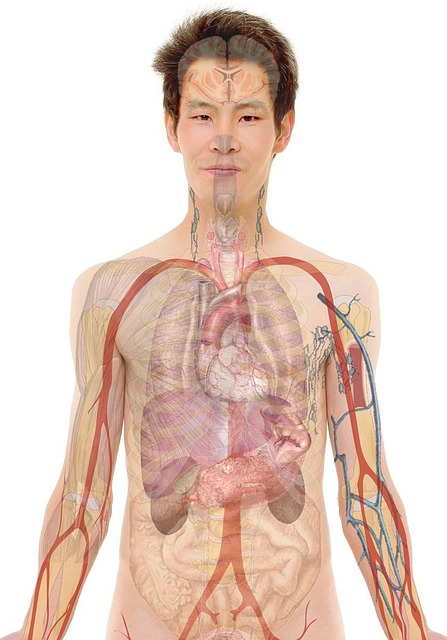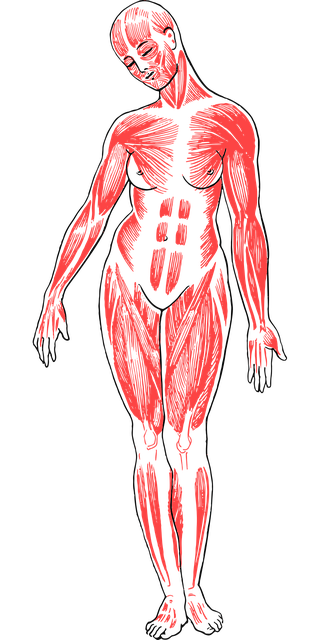Non-invasive body contouring treatments using advanced technologies like radiofrequency, laser, and ultrasound have gained popularity for safe and effective fat reduction without surgery. Techniques such as cryolipolysis, HIFU, and laser-assisted lipolysis offer precise targeting, improved skin texture, and faster results with minimal downtime. Ideal for individuals seeking toned physiques, these methods foster an inclusive aesthetics industry accessible to all. Prioritizing safety and efficacy, proper post-care ensures optimal results, and future innovations like HIFEM and AI-driven 3D imaging continue to revolutionize body contouring.
“Discover the transformative world of non-invasive body contouring, a growing trend in aesthetic medicine. This comprehensive guide explores innovative treatments reshaping the way we achieve our ideal figures. From understanding the basics to unearthing advanced technologies, we delve into the science behind targeted fat reduction. Learn about the benefits, popular procedures, and safety considerations for those seeking body shaping solutions. Get ready to navigate the future of body contouring and unlock your confidence.”
Understanding Non-Invasive Body Contouring: Unveiling the Basics

Non-invasive body contouring treatments have emerged as a popular and effective way to reshape and define the body without surgery or lengthy recovery periods. Unlike invasive procedures, these advanced techniques offer minimal discomfort, faster results, and no downtime, making them an attractive option for those seeking a more toned and sculpted physique. The process leverages technology such as radiofrequency, laser, and ultrasound to target specific areas of fat and stimulate collagen production.
By focusing on the subcutaneous tissues, non-invasive body contouring can reduce stubborn fat deposits, improve skin texture, and enhance overall body shaping. These treatments are designed to be safe and suitable for a wide range of individuals, allowing for enhanced self-confidence and a more comfortable journey towards achieving one’s aesthetic goals.
The Rise of Targeted Fat Reduction Technologies

The world of aesthetics is constantly evolving, and one notable trend in recent years has been the rise of targeted fat reduction technologies. These non-invasive body contouring treatments have gained immense popularity due to their effectiveness and minimal downtime compared to traditional surgical procedures. With advancements in technology, scientists and dermatologists have developed innovative ways to target and reduce stubborn fat deposits without the need for incisions or extensive recovery periods.
This shift towards non-invasive body contouring offers a more accessible and comfortable option for individuals seeking body reshaping. Technologies such as cryolipolysis, high-intensity focused ultrasound (HIFU), and laser-assisted lipolysis have revolutionized the way we approach fat reduction. These methods use targeted energy delivery to break down and eliminate fat cells, leading to noticeable results in shaping and toning various areas of the body. As a result, folks are embracing these treatments as effective alternatives to surgical procedures, fostering a more inclusive and accessible beauty industry.
How Does Non-Invasive Contouring Work? A Scientific Perspective

Non-invasive body contouring treatments leverage advanced technologies to target and reshape specific areas without breaking the skin. This approach is founded on the scientific principle of stimulating collagen production and fat cell disruption. Technologies like radiofrequency, laser, and ultrasonic waves are employed to heat deep layers of the skin, prompting cellular repair and restructuring. At the same time, these energies disrupt adipose tissue, leading to reduced fat deposits and improved body definition.
The mechanism behind non-invasive contouring involves both biological and physical processes. Heating the skin prompts collagen synthesis, enhancing skin elasticity and firmness over time. Simultaneously, targeted energy absorption in fat cells causes them to break down and release stored lipids, which can then be eliminated by the body’s natural metabolic processes. This dual action results in a slimmer, more contoured silhouette without surgery or lengthy recovery periods associated with invasive procedures.
Benefits and Advantages for Patients Seeking Body Shaping

Body contouring treatments have evolved significantly, offering patients a range of non-invasive options for achieving their aesthetic goals. One of the key advantages of these advanced techniques is their ability to target specific problem areas with precision, providing remarkable results without the downtime or discomfort associated with more aggressive procedures.
Non-invasive body contouring methods use technologies like cryolipolysis (fat freezing), high-intensity focused ultrasound (HIFU), and radiofrequency (RF) energy to sculpt and define the body. These treatments are particularly appealing as they offer minimal recovery time, allowing patients to resume their normal activities almost immediately. Additionally, they provide a safe and effective alternative for individuals who may be hesitant or ineligible for surgical interventions.
Exploring Popular Non-Surgical Contouring Procedures

In the realm of body contouring, non-invasive procedures have emerged as popular choices for those seeking to enhance their physique without undergoing surgery. These treatments offer a safe and effective way to achieve desired results, targeting specific areas of fat reduction or muscle toning. One such procedure is CoolSculpting, which uses cryolipolysis to freeze and eliminate stubborn fat cells, leading to a more sculpted appearance. Another popular method is mesotherapy, involving the injection of substances like vitamin B12 and amino acids into the skin to promote fat breakdown and lymphatic drainage.
Ultrasound-based procedures also gain traction in the non-surgical contouring space. High-intensity focused ultrasound (HIFU) targets deep muscular layers, stimulating collagen production and resulting in a firmer, more defined physique. Additionally, radiofrequency (RF) treatments heat up the skin and underlying tissues, encouraging fat cell destruction and collagen renewal. These non-invasive body contouring options provide individuals with flexible, low-risk alternatives to conventional surgical procedures, catering to those seeking subtle enhancements or wishing to avoid the drawbacks of invasive techniques.
Safety and Effective Considerations: Precautions to Take

When considering targeted body contouring treatments, safety and effectiveness should be at the forefront of your mind. Opt for non-invasive body contouring procedures that utilise technologies like cryolipolysis (fat freezing), high-intensity focused ultrasound (HIFU), or radiofrequency (RF) energy. These methods offer precise targeting without breaking the skin, significantly reducing risks associated with more invasive options.
Remember to choose a reputable clinic with trained professionals who can provide detailed consultations and explain the process, expected outcomes, and potential side effects. Always inquire about certifications, reviews, and aftercare instructions. Following these precautions will help ensure your experience is safe, effective, and positive.
Who is a Suitable Candidate for Targeted Body Contouring?

Targeted body contouring treatments are ideal for individuals seeking to reduce stubborn fat deposits and enhance their body shape without invasive surgery. Suitable candidates typically have well-maintained overall health, realistic expectations, and areas of concern that respond well to non-invasive body contouring. This includes people who might have completed significant weight loss or toning through diet and exercise but still have residual fat pockets or uneven skin texture in specific regions, such as the abdomen, thighs, or arms.
Candidates should be committed to maintaining a healthy lifestyle, including regular physical activity and a balanced diet, both before and after treatment. Additionally, understanding that multiple sessions may be required to achieve optimal results is essential. Non-invasive body contouring is particularly beneficial for those who prefer a more gradual approach to achieving their desired figure or have medical conditions precluding traditional surgical options.
Post-Treatment Care and Recovery Tips

After undergoing any non-invasive body contouring treatment, proper post-care is essential to ensure optimal results and a comfortable recovery process. The first few days following the procedure may involve some mild discomfort, redness, or swelling, which is normal. It’s crucial to stay hydrated by drinking plenty of water and applying cold compresses to reduce any inflammation. Light exercise, such as walking, can aid in circulation and expedite healing, but intense workouts should be avoided until your practitioner gives the green light.
Additionally, maintaining a healthy diet rich in nutrients supports the body’s natural recovery mechanisms. Avoid excessive alcohol consumption and sun exposure during this period. Remember to listen to your body; if you experience severe pain or unusual symptoms, contact your healthcare provider promptly. Following these simple tips will help you manage any side effects and allow for a smoother transition as your body contours to its new shape.
The Future of Body Contouring: Emerging Trends and Innovations

The future of body contouring is looking promising with a growing focus on non-invasive treatments that offer safe and effective results. Emerging trends in this field prioritize minimizing recovery time, reducing patient discomfort, and achieving natural-looking outcomes. One such innovation is high-intensity focused electromagnetic energy (HIFEM), which uses gentle electrical pulses to stimulate muscle contraction and fat reduction without surgery or anesthesia.
Another notable trend is the integration of advanced technologies like artificial intelligence (AI) and 3D imaging. These tools enable precise measurements, personalized treatment plans, and enhanced visual results prediction. As consumers demand more customized and minimally invasive options, researchers continue to push the boundaries of body contouring technology, ensuring a healthier and more aesthetic future for those seeking body shape improvements.
